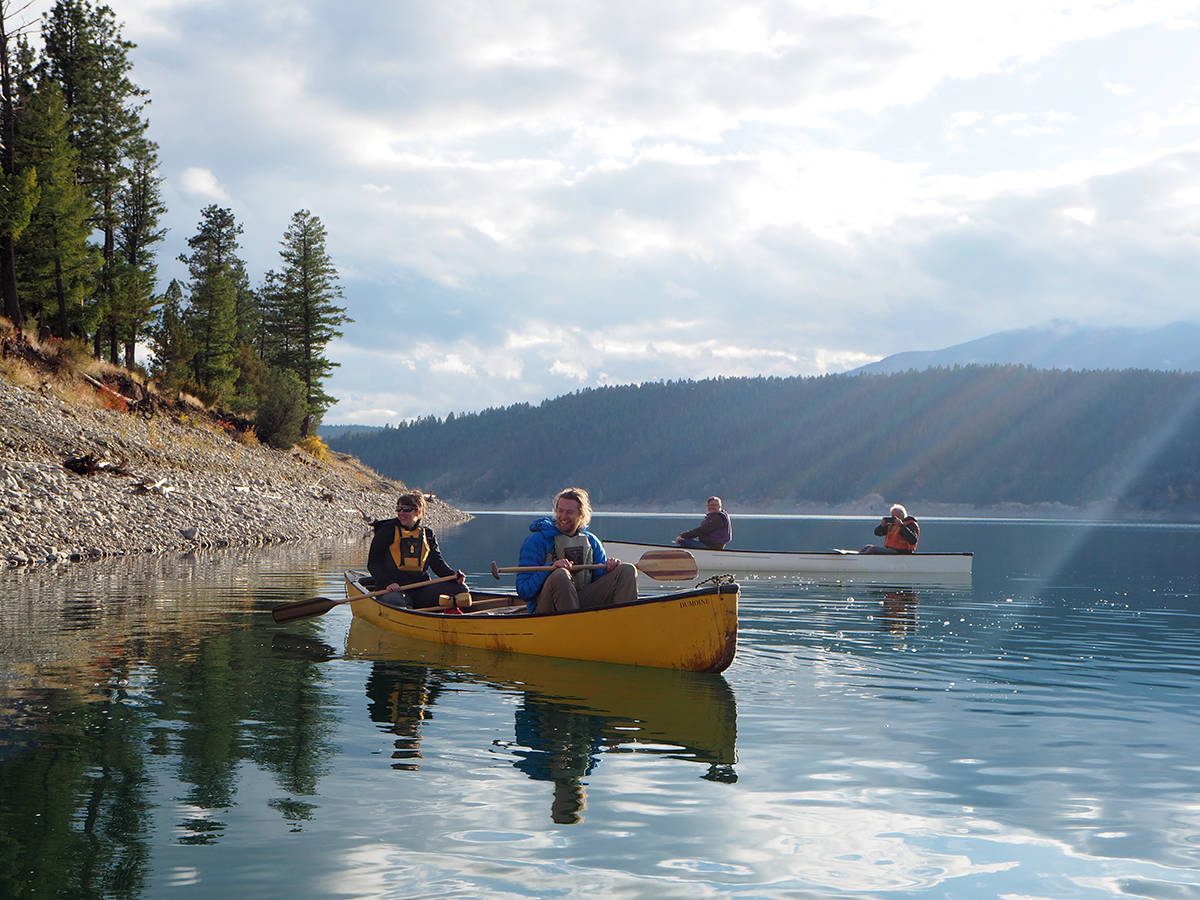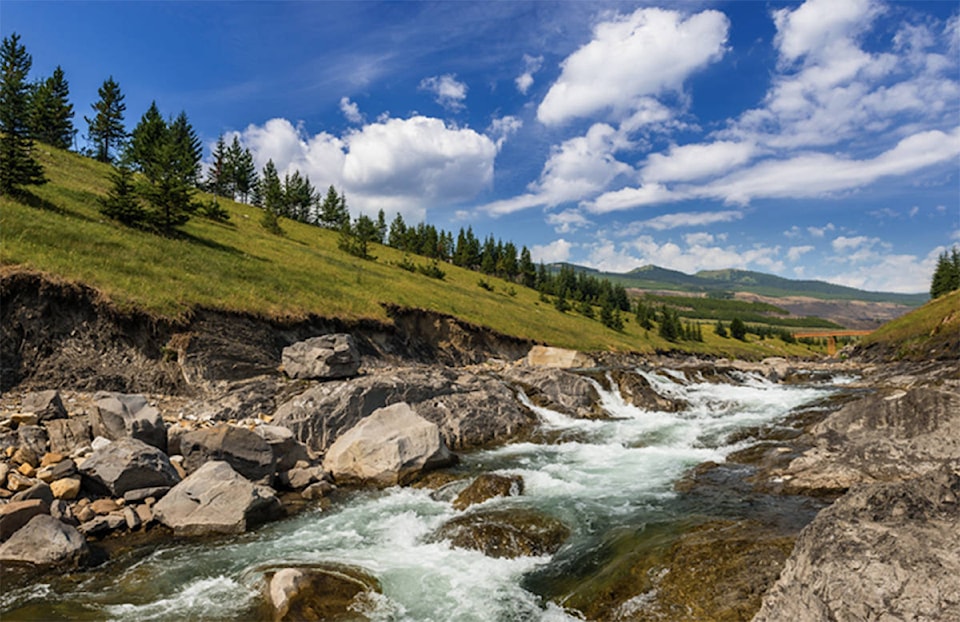Moves to weaken mining pollution limits in the Elk Valley and Koocanusa Reservoir have alarmed a local conservation group.
Teck Coal is in the process of finalizing the 2019 Implementation Plan Adjustment (IPA), which revises the initial mitigation plan developed to achieve targets set in the Elk Valley Water Quality Plan (EVWQP) and Permit 107517.
These targets aim to stabilize and reverse increasing concentrations of selenium, sulphate, nitrate, and cadmium in surface water, with Active Water Treatment Facilities (AWTFs) and clean water diversions identified as tools to achieve this.
LOOK BACK: Elk Valley water treatment plan restarts
According to a Teck summary published in February, the company’s mining permit requires adjustments to the mitigation plan, based on an adaptive management approach, by July 31, 2019 and every three years thereafter.
“The October 2017 RWQM (Regional Water Quality Model) update showed that the projected concentrations were above limits and SPOs (Site Performance Objectives), resulting in the need to update the mitigation plan,” reads the summary.
Wildsight Science and Communications Analyst Lars Sander-Green said while he doesn’t have the full details yet, it is clear Teck wants the Province to approve higher pollution limits that won’t be safe for fish and other aquatic life.
The proposed IPA delays the opening of active water treatment facilities and, in some cases, reduces their total treatment capacity.
However, it also puts most clean water diversions ahead of schedule, including Kilmamock Creek near Fording River and South Gate Creek near Elkview Operations.
“Teck hasn’t met their commitments under the Elk Valley Water Quality Plan. Pollution levels are too high from the Fording River down to Koocanusa,” said Sander-Green.
“Is B.C. just going to give Teck a pat on the back for making an effort and move the goalposts for them so they can pollute even more?”
LOOK BACK: Water quality province’s responsibility: Wildsight
It comes as Canadian federal prosecutors consider charges against Teck under the Fisheries Act in connection with discharges of selenium and calcite from coal mines in the Elk Valley.
In its third quarter financial report, the company advised shareholders it had received notice from the Public Prosecution Service of Canada.
“If federal charges are laid, potential penalties may include fines as well as orders with respect to operational matters. It is not possible at this time to fully assess the viability of TCL’s (Teck Coal Limited) potential defenses to any charges, or to estimate the potential financial impact on TCL of any conviction. Nonetheless, that impact may be material,” reads the report published in October last year.
In the Elk Valley, water quality is monitored at eight compliance points, which are downstream from each of Teck’s mine operations, where discharges are expected to be highest.
Order Stations are further downstream from mines and are intended to reflect fully mixed conditions.
There are seven Order Stations located throughout the Elk Valley and at Lake Koocanusa, which have SPOs for selenium, sulphate, nitrate and cadmium.
In the IPA update, Teck admits that it won’t consistently meet SPOs until 2023 when the Fording River and Elkview AWTFs are commissioned.
Prior to commissioning of these treatment facilities, selenium and nitrate concentrations are predicted to be seasonally above SPOs at four of the seven order stations – Fording River downstream of Greenhills Creek, Fording River downstream of Line Creek, Elk River upstream of Grave Creek and the Koocanusa Reservoir.
“Studies are underway to evaluate the effects of these short-term projected seasonal exceedances of the SPOs on the aquatic ecosystem,” reads the update.
Wildsight has not been consulted on the IPA, which is still being revised by Teck in negotiation with the B.C. Government and Ktunaxa Nation Council (KNC).
Sander-Green believes the public should have a say on any changes to the mitigation plan.
“The Elk Valley Water Quality Plan was developed only a few years ago, with the involvement of the people of the Elk Valley,” he said.
“With Teck proposing major changes to the plan, including higher water pollution levels over the next few years, we think the public should be part of the revision process, right from the start.
“Teck shouldn’t be negotiating behind closed doors to raise pollution limits.”
Meanwhile, three First Nations groups, including the Ktunaxa, are lobbying the U.S. and Canadian governments for a lower selenium target in the Koocanusa Reservoir to protect local fish species.
LOOK BACK: Elk Valley mining puts international treaty at risk: U.S. officials
Selenium is an essential trace element necessary for cellular function in many organisms, however, excessive amounts may result in toxic effects such as deformities and increased mortality in fish populations.
The Free Press has obtained a letter signed by KNC Chairperson Kathryn Teneese, Kootenai Tribe of Idaho Chairperson Gary Aitken Jr. and Confederated Salish and Kootenai Tribe Vice-Chairman Leonard Gray, on behalf of Chairman Ron Trahan, and addressed to Canadian Minister of Environment and Climate Change Strategy George Heyman, Montana Governor Steve Bullock and Idaho Governor C.L. “Butch” Otter.
“We are reaching out at this time to share new concerns about the health and protection of the fish species that live in Koocanusa Reservoir and downstream in the Kootenai watershed,” said the group in the letter sent late February.
“Based on the amount of selenium in tissues of multiple species, the uncertainties around impacts to those species based on selenium in their tissues, and the number of years still before a site specific target is in place for Koocanusa, we believe that a more conservative approach is required to protect the aquatic ecosystem throughout the reservoir on both sides of the border.
“It is our recommendation that a lower selenium criteria should be established on an interim basis until the longer-term target is set in 2020.”
The group cites research that shows current conditions in the reservoir have resulted in selenium burdens in fish at levels that pose a risk to aquatic health through reproductive effects.
Of particular concern is the white sturgeon, a species endemic to the Kootenai River, which is the most sensitive to selenium.
The group is advocating for an interim objective of 1.5 micrograms per litre for dissolved selenium until the site specific target is achieved.
Last year, Wildsight launched a winter water sampling program at Lake Koocanusa in conjunction with Sierra Club BC, Headwaters Montana and the University of Montana.
LOOK BACK: Lake Koocanusa under the microscope
They hoped to fill a data gap left by Teck, which has historically not tested the reservoir during winter due to safety concerns.
Wildsight expected to find higher selenium levels in the colder months, when water flow is low. It will publish the results on its website once testing for the year is finished in about a month.
Since the program’s launch, Teck has also started sampling the reservoir during winter, according to Manager of Social Responsibility Nic Milligan.
LOOK BACK: Elkford meeting puts Teck’s environmental work in focus
“As winter provides safe access challenges, some of the sampling includes alternate locations and methodology to collect surface grab samples along the shore line of both sides of the reservoir rather than depth integrated samples,” he said.
Milligan confirmed construction of the Fording River ATWF is advancing as planned, with site preparation work completed in late 2018.
Building construction recently started and Teck has received, and placed, the first piece of treatment equipment.
“Construction will peak later this summer and progress through 2019 and 2020,” said Milligan. “We are on schedule for late 2020 construction completion and start-up of the treatment facility.”
Teck has also identified that sulphate treatment may be required at Line Creek Operations as early as 2026.
Currently, the selenium and nitrate treatment technology Teck uses, biological active water treatment, does not treat sulphate.
The company is investigating different sulphate treatment technologies with a pilot program to take place over the course of 2019-2020.
Milligan said this will likely involve piloting two sulphate removal technologies with a location still to be determined.
Sander-Green maintains Teck is yet to come up with a long-term solution to the Elk Valley’s “selenium problem”, which has been known for decades.
He has called for lower limits and harsher consequences to give the company an incentive to change.
“Wildsight has told the Province that raising pollution limits isn’t acceptable,” he said.
“We’ll continue to stand up for fish and clean water in the Elk Valley, and we hope everyone will stand up with us to tell the government that it’s time to get serious about water pollution.
“We hope that the Province will give local people a chance to be heard on these significant changes to the EVWQP now, not after all the changes have been worked out behind closed doors.”

